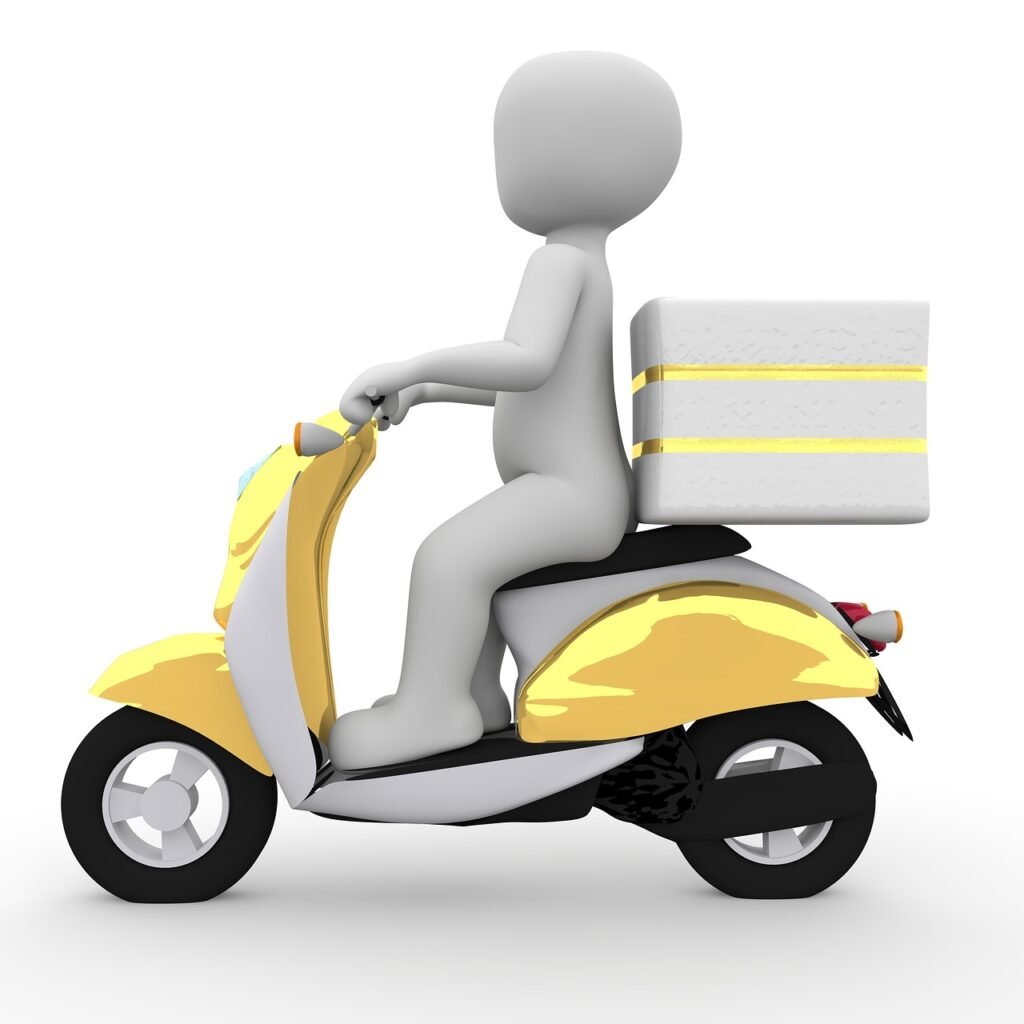
So you’ve decided to embark on the exhilarating journey of scooter riding! Whether you’re looking for a fun way to commute, explore your city, or simply experience the wind in your hair, this beginner’s guide is here to help you get started. From choosing the right scooter to mastering the basic techniques, we’ll provide you with all the information you need to become a confident and safe scooter rider in no time. So hop on, fasten your helmet, and let’s hit the road!

This image is property of pixabay.com.
Check out our product reviews!
Choosing the Right Scooter
When it comes to choosing the right scooter, it’s important to consider your specific riding needs. Are you using it solely for short commutes or do you plan on taking longer rides? Do you prefer a lightweight scooter for easy maneuverability or are you willing to sacrifice portability for more power? By understanding your riding needs, you can narrow down the options and find a scooter that suits you best.
In addition to your riding needs, it’s essential to determine your budget. Scooters come in a wide range of prices, so it’s important to set a budget that aligns with your financial situation. Consider how much you’re willing to spend and keep in mind that scooters may also require additional costs for maintenance and accessories.
Once you have an idea of your riding needs and budget, it’s time to evaluate the scooter’s specifications. Look at factors such as engine size, top speed, and range. Smaller engine sizes are ideal for urban environments, while larger engines provide more power for longer rides. Additionally, consider the scooter’s weight capacity and storage options, as these can affect your overall riding experience.
Safety should always be a top priority when choosing a scooter. Check for safety features such as anti-lock braking systems (ABS) and bright lights for better visibility. Some scooters also come with advanced safety features like electronic stability control (ESC) or traction control. By selecting a scooter with these safety features, you can ensure a safer and more enjoyable riding experience.
Safety Gear and Precautions
Before you embark on your scooter riding journey, it’s crucial to prioritize your safety by wearing the appropriate gear. The most important piece of safety equipment is a reliable helmet. Choose a helmet that fits properly, covers your head entirely, and is certified to meet safety standards. A helmet can greatly reduce the risk of head injuries in the event of an accident.
In addition to a helmet, make sure to use protective clothing while riding. This includes wearing long pants, a jacket, and gloves to protect your skin in case of a fall. Choose clothing that is made from durable materials and is resistant to abrasion. This will provide an extra layer of protection in case of an accident.
Proper footwear is essential for scooter riding. Avoid wearing open-toed shoes or sandals, as they do not provide enough protection for your feet. Opt for sturdy, closed-toe shoes or boots that provide good grip and ankle support. This will give you better control over the scooter and reduce the risk of foot injuries.
Before every ride, it’s important to check the condition of your scooter. Inspect the tires for any signs of wear or damage and ensure they are properly inflated. Check the brakes to make sure they are working effectively. Test all the lights to ensure they are functioning correctly. By regularly inspecting your scooter, you can catch any potential issues before they become serious safety hazards.
Lastly, always be aware of your surroundings while riding. Look out for any potential hazards such as potholes, debris, or uneven surfaces. Pay attention to other vehicles and pedestrians on the road. By being cautious and observant, you can minimize the risk of accidents and ensure a safe riding experience.

This image is property of pixabay.com.
Check out our product reviews!
Learning the Basics
Getting familiar with the controls is the first step in learning how to ride a scooter. Each scooter will have different controls, so take the time to read the owner’s manual and understand how to operate the throttle, brakes, and other features. Practice using the controls in a safe and controlled environment until you feel comfortable.
Starting in a flat and open area is recommended for beginners. This allows you to focus on getting comfortable with the scooter without the added challenge of hills or traffic. Find a secluded parking lot or an empty street and practice your basic skills in a spacious area where you can freely move around.
Starting and stopping smoothly is a fundamental skill to master. Practice accelerating and decelerating gradually, using both the throttle and the brake in a controlled manner. This will help you build confidence in controlling the speed and maneuverability of your scooter.
As you progress, it’s important to practice turning and cornering. Start with wide turns and gradually reduce the radius as you become more comfortable. Remember to lean into the turn and look in the direction you want to go. Cornering is a key skill to navigate through traffic and navigate tight spaces.
Balancing and maneuvering the scooter is another crucial skill to develop. Keep your body centered and balanced while riding, using your legs to control the scooter’s movement. Practice maneuvering around objects or obstacles to enhance your control and agility on the scooter.
Understanding Traffic Rules
To ride a scooter safely and legally, it’s essential to understand and follow the local traffic regulations. Each area may have specific rules and laws regarding scooter riding, so take the time to familiarize yourself with them. This includes understanding the minimum age requirement, licensing requirements, and where you are allowed to ride.
Road signs play a vital role in guiding scooter riders and other road users. Learn about the different road signs and what they mean. This includes signs indicating speed limits, no-entry zones, stop signs, and pedestrian crossings. Understanding these signs will help you navigate through traffic safely and effectively.
Understanding right-of-way is crucial for ensuring a smooth and safe ride. Know who has the right-of-way in different traffic situations, such as at intersections or roundabouts. Yield to other vehicles or pedestrians when necessary and avoid making sudden movements that can cause confusion or accidents.
Speed limits exist for a reason – to ensure safety on the road. Familiarize yourself with the speed limits in your area and adhere to them. Speeding not only puts you at risk but also endangers other road users. Always ride at a safe and appropriate speed, considering the road conditions and traffic flow.
To stay visible to other road users, it’s important to use your scooter’s headlights, taillights, and turn signals effectively. Use your lights at all times, especially during low light conditions or when visibility is reduced. Signal your intentions early and clearly, allowing other drivers and pedestrians to anticipate your movements.

This image is property of pixabay.com.
Mastering Safe Riding Techniques
Maintaining a proper riding posture is crucial for stability and control. Sit upright with a relaxed grip on the handlebars. Keep your feet firmly on the footrests and avoid leaning excessively while turning. This posture allows for better balance and control of the scooter.
Using both brakes correctly is essential for safe riding. Familiarize yourself with the location and operation of both the front and rear brakes. Apply gradual and controlled pressure to the brakes to avoid skidding or losing control. Remember to distribute the braking force between the front and rear brakes to ensure stability.
Keeping a safe following distance between your scooter and the vehicle in front is necessary to avoid accidents. Maintain a distance that allows you enough time to react and stop safely in case the vehicle in front suddenly brakes. A good rule of thumb is to keep a minimum of two seconds of distance between you and the vehicle ahead.
Signaling your intentions is essential for communicating with other road users. Use your turn signals to indicate when you’re turning or changing lanes. Look over your shoulder and use hand signals when necessary to ensure that other road users are aware of your intentions.
Riding defensively means being aware of your surroundings and anticipating potential hazards. Always be alert and scan the road ahead for any potential dangers. Be prepared to react quickly to any unexpected situations and adjust your speed or position accordingly.
Navigating Different Terrains
Managing smooth and flat surfaces is the easiest terrain to navigate on a scooter. However, practice maintaining a steady speed and keeping a consistent line when riding on these surfaces. This will help you build confidence and control over the scooter.
Approaching slopes and inclines requires a different technique. Gradually increase your speed as you ascend the slope, while maintaining a stable posture and grip. When descending, regulate your speed and use the brakes sparingly to avoid losing control.
Handling uneven or bumpy roads can be challenging but with practice, you can navigate them safely. Slow down and adjust your riding position to absorb the bumps and maintain stability. Keep a firm grip on the handlebars and use your legs to cushion the impact as much as possible.
Tackling wet or slippery conditions requires extra caution. Reduce your speed and avoid sudden acceleration or braking, as this can cause the wheels to lose traction. Maintain a safe distance from other vehicles and be cautious when cornering or turning, as the scooter may be more prone to skidding.
Traveling on gravel or loose surfaces can be particularly tricky. Reduce your speed and keep a light grip on the handlebars to allow the scooter to maneuver more freely. Avoid sudden movements or sharp turns, as these can cause the wheels to lose traction. Gradually apply the brakes to come to a stop.

This image is property of pixabay.com.
Dealing with Potential Hazards
When riding a scooter, it’s important to watch out for potholes and obstacles on the road. Scan the road ahead and be prepared to navigate around or over these hazards. Slow down and reduce your speed when approaching potential obstacles to give yourself enough time to react and avoid them.
Beware of blind spots, especially when riding alongside larger vehicles. These blind spots can make it difficult for drivers to see you. Stay visible by positioning yourself properly, using your lights, and avoiding lingering in blind spot areas. Keep a safe distance from larger vehicles to ensure you have enough space to maneuver.
Avoid sudden maneuvers or abrupt changes in speed or direction, as this can surprise other road users and potentially cause accidents. Signal your intentions early and take your time when changing lanes, turning, or overtaking. Riding predictably and smoothly will help minimize the risk of accidents and ensure the safety of everyone on the road.
Pedestrians can be unpredictable, so always stay alert and be prepared to stop or slow down when necessary. Give pedestrians the right of way at crosswalks and intersections and be extra cautious in areas with heavy foot traffic. Look out for pedestrians crossing the road and adjust your speed accordingly to ensure their safety.
Sharing the road with other vehicles requires caution and awareness. Stay vigilant for cars, trucks, and motorcycles around you. Maintain a safe distance from other vehicles to avoid any potential collisions. Always use your mirrors and shoulder checks to ensure no vehicles are in your blind spot before changing lanes or making turns.
Understanding Scooter Maintenance
Regular maintenance is essential for keeping your scooter in optimal condition. One important aspect of maintenance is checking the tire pressure regularly. Underinflated or overinflated tires can affect your scooter’s stability and handling. Refer to the owner’s manual for the recommended tire pressure and use a gauge to ensure your tires are properly inflated.
Inspecting the brakes and lights is another crucial part of scooter maintenance. Check the brake pads for wear and tear, ensuring they have enough pad material remaining. Test the brakes to make sure they are working effectively. Additionally, inspect all lights – headlights, taillights, turn signals – to ensure they are functioning properly. Replace any faulty bulbs immediately.
Cleaning and lubricating the chain is important for optimal performance and longevity. Use a mild solvent and a brush to remove any dirt or debris from the chain. After cleaning, apply a lubricant specifically designed for motorcycle chains. This will prevent rust and ensure smooth operation of the chain.
Checking and topping up fluids is necessary for keeping your scooter running smoothly. Refer to the owner’s manual to locate the various fluid reservoirs – engine oil, coolant, brake fluid – and ensure they are topped up to the recommended levels. Regularly checking and maintaining the fluids will prevent potential issues and keep your scooter functioning properly.
Additionally, scheduling regular servicing with a qualified mechanic is crucial for the long-term health of your scooter. Regular servicing includes more in-depth checks and adjustments that can identify and resolve any potential issues before they become major problems. Follow the recommended service intervals provided by the manufacturer to ensure your scooter’s continued performance and safety.

This image is property of pixabay.com.
Riding Responsibly and Ethically
Observing traffic etiquette is not only courteous but also promotes safety on the road. Avoid aggressive riding behavior and always treat other road users with respect. Maintain your lane, use your turn signals, and yield the right of way when necessary. By following traffic etiquette, you contribute to a smoother and more harmonious flow of traffic.
Respecting pedestrians’ right of way is crucial for their safety. Always yield to pedestrians at crosswalks and intersections, allowing them to cross safely. If there is no designated pedestrian crossing, give pedestrians ample time to cross the road before proceeding.
Avoid excessive speed, especially in urban areas or areas with heavy traffic. Speeding increases the risk of accidents and reduces your reaction time. Always adhere to the posted speed limits and adjust your speed according to the road and traffic conditions.
Never ride a scooter under the influence of drugs or alcohol. Impaired riding puts not only your life at risk but also the lives of others on the road. Alcohol and drugs impair your judgment, coordination, and reaction time, making it extremely dangerous to operate a scooter. Always ride sober and responsibly.
When parking your scooter, do so considerately. Follow any designated parking rules and avoid obstructing pedestrian walkways or other vehicles. Park in designated motorcycle parking areas whenever possible. If motorcycle parking is not available, find a safe, legal, and convenient spot that does not inconvenience others.
Continuing Education and Improvement
To further enhance your scooter riding skills and knowledge, consider taking a certified scooter riding course. These courses are designed to teach you advanced riding techniques, emergency maneuvers, and traffic strategies. They provide valuable hands-on training and help build confidence on the road.
Joining group rides or events can also be a great way to improve your riding skills while connecting with other scooter enthusiasts. Group rides offer a safe and supportive environment where you can learn from experienced riders and exchange tips and advice. Participating in events can expose you to different riding situations and challenges, helping you grow as a rider.
Reading books or articles on scooter riding can provide valuable insights and knowledge. Look for reputable sources that cover various aspects of scooter riding, from basic skills to advanced techniques. Expand your understanding of scooter mechanics, road strategies, and safety practices through literature.
Consistent practice is key to building confidence and mastering scooter riding. Set aside time regularly to practice your skills and reinforce what you’ve learned. Whether it’s in an empty parking lot or on quiet roads, practice different maneuvers, and challenging scenarios. The more you practice, the more natural and comfortable you will become on your scooter.
Seeking guidance and advice from experienced riders is an excellent way to gain valuable insights and tips. Connect with local scooter communities or online forums where you can interact with experienced riders. Ask questions, seek advice, and learn from their experiences. Their wisdom and expertise can help accelerate your learning and growth as a scooter rider.
By following these comprehensive guidelines, you can embark on your scooter riding journey with confidence, knowledge, and a commitment to safety. Remember to always prioritize safety, stay informed about local regulations, and continually strive to improve your skills. Scooter riding can be an exhilarating and convenient mode of transportation, but it’s important to approach it with responsibility and respect for yourself and others on the road. Safe travels!


